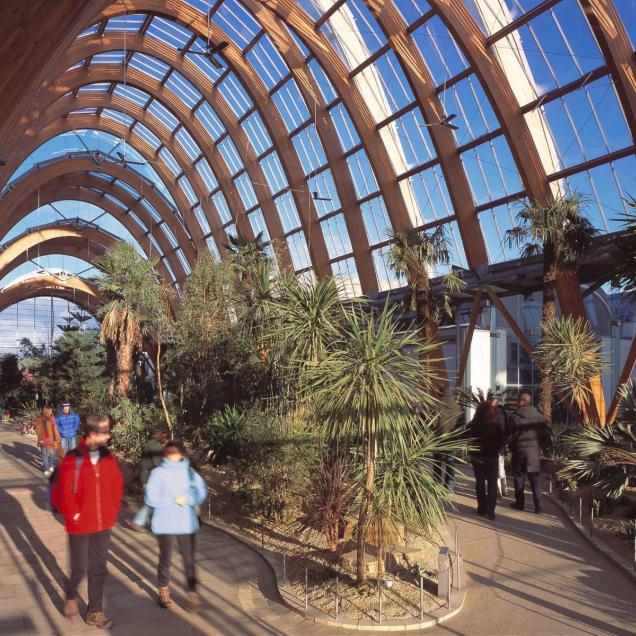

They're all glassy eyed in Sheffield
Stephen Anderton peers into a vast winter garden and discovers a city nurturing an exotic Victorian tradition
IT IS a rare thing to see buildings demolished to make way for new glasshouses, but it has happened in Sheffield. The 1960s extension of the magnificent Victorian town hall, known disparagingly by the locals as “the egg-box��?, has been flattened and an exciting modern Winter Garden of wood and glass built in its place.
The structure cost a cool £7 million, and no doubt the citizens of Sheffield are already competing to find a nickname for it. To my eye, it is something between the Sydney Opera House and a giant toast rack. It is well worth a visit, and if you go, don’t miss the adjoining Peace Garden, another project sporting a grid of multi-jet fountains à la Somerset House, magnificent new balustrades and stonework, and beds where Melianthus major and Canna x ehemanii are successfully overwintered outdoors. This city is gardening seriously.
Unlike the new cylindrical winter garden in Sunderland, this one is a 70m by 22m (230 x 72ft) rectangle covered by a series of deep wooden arches. The roof rises to 21m so that real trees can be grown in here. Araucaria heterophylla, a slender sister species of the monkey puzzle, is ready to shoot up into it, because the temperature, thanks to underfloor heating, will drop no lower than 4C (39F).
Captain Cook spotted this tree on Norfolk Island, 900 miles east of Australia. He thought the timber would make good masts, but he was wrong: the wood snapped too easily. He also found phormiums under the pines and thought their fibre could be used to make sails. In New Zealand, Maori women had mastered the skill of transforming the fibre into cloth, but Cook’s men failed in the enterprise. However, the economic promise of these industrial and naval “crops��? encouraged the British Government to speed up settlement of Australia.
It is this kind of plant-related social history that the Winter Garden proposes to explain, to school parties and adult visitors. There is performance space within the house too, for choirs and theatre groups. Shops and galleries adjoin one side of the house, in which you can buy cut blooms of the South African banksias you see growing near by, or potted cycads, or restios.
The great roof arches were made of laminated larch in Germany. Being a metre deep they give the feeling of a solid roof, as they recede from the eye, while letting in plenty of light. For immediate impact ten 5m-high Chusan palms have been imported, but there are many more species of palm coming along underneath, including Butias, Washingtonias and Jubeas, and even a viciously spiny Trithrinax. Planting conditions vary throughout the house. There are arid parts full of succulents and “black boys��? (Xanthorrhoea), and damper areas where tree ferns or bananas thrive.
In the tradition of Victorian winter gardens, there is even a ribbon of colourful bedding-out (on my visit composed of hippeastrums, primulas and cyclamens) which runs through the house, making a curious but not impossible contrast with the “naturalised-exotics��? look which predominates. It can be a little disconcerting where one style meets the other, but overall the Winter Garden is a splendid new venture for the city. And it is so near to the Crucible Theatre that you could actually get your interval coffees under the palm trees.
Link: The Times 1st March 2009
© The Times 2003